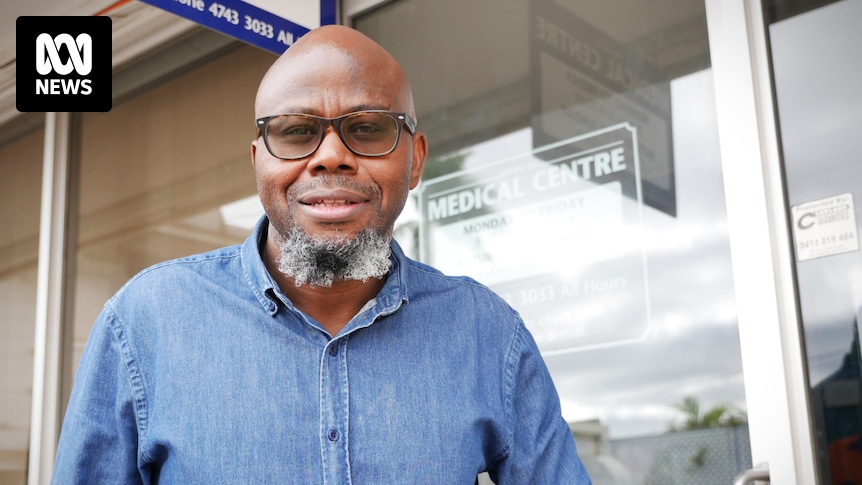Sliding trainee general practitioner numbers are set to end next year, thanks to a national training program receiving a 19.8 per cent increase in applicants.
The seven-year decline is set to reverse as 1,504 junior doctors have been accepted into specialist training through the Australian General Practice Training program at the Royal Australian College of General Practitioners (RACGP).
That is 249 more trainees than this year.
The RACGP is one of two colleges that provides the program, training around 90 per cent of the country’s general practitioners and four out of five rural GPs.
An extra 177 vacant positions have been filled across Australia, including in regions that have not had training GPs since 2016, and doctors will start practising at the beginning of next year.
The program ensures more than half of the GPs spend at least a year outside a major metropolitan area and over a third will do all their training in regional, rural, or remote places.
There is a lengthy wait for crucial care at Mount Isa Hospital. (ABC North West Qld)
RACGP outgoing president and regional GP Dr Nicole Higgins said while it was good news for Australia’s health system, she did not want to see rural and regional communities left behind.
“The challenge is what we call a maldistribution, so we’ve actually got enough doctors in Australia compared to other countries,” she said.
“A lot of them work in the cities, and we need to be able to move them to the places that need them the most.
“[Patient wait times] are higher than average [in rural and remote areas], and certainly that would not be tolerated in urban centres.”
Why has there been a decline?
Dr Michael Mbaogu says his medical practice is overloaded with patients. (ABC News: Jemima Burt)
GP at Mount Isa Medical in north-west Queensland Michael Mbaogu said although historically there had been a reduction in the number of GP applicants, the number of graduating junior doctors had increased.
“That is because of the workload, the reduced incentives and more cuts to [Medicare] item numbers and modifications and all the rest of it that makes it difficult,” he said.
Dr Higgins said trainee numbers were rising because attitudes around general practice were improving, but she wanted the government to fund an extra 500 places in the training program over the next five years.
A spokesperson from the Department of Health said the Australian government had already approved RACGP to offer additional funded training places next year.
They said further positions for 2026 and beyond would be considered in the context of future budget processes.
Outback Queensland struggling
Dr Mbaogu said there had been a tsunami of graduating doctors across the country, but the wave had barrelled along the east coast and left inland Australia untouched.
“The World Health Organization recommendation is that the doctor patient ratio should be about one to 1,000,” he said.
“But here [at Mount Isa Medical] we have four doctors looking after 15,000 patients — that is one in almost 4,000.
“That is happening here in Australia, and that’s not acceptable.”
Rural and remote communities in Queensland struggle to retain healthcare workers. (Supplied: Outback Queensland Tourism Association)
Geographical narcissism contributing to doctor shortage
Dr Bruce Chater has committed his 40-year long career in medicine to teaching young doctors about the benefits of working in regional and remote areas.
He said he had been fighting a damaging ideology that contributed to health professionals not moving regional areas; that is, that large cities provided skills and opportunities that could not be matched in the bush.
The chair of a global network of rural doctors said this was summarised by a term called “geographical narcissism”, which was introduced to him by Swedish psychologist Malin Fors.
And it had struck a chord with medical professionals.
Dr Bruce Chater advocates for healthcare professionals to work in rural regions. (ABC Capricornia: Rachel McGhee)
“She got sick of people ‘urban-splaining’ things to her, as though she didn’t really have any knowledge, and often they didn’t have any knowledge of her circumstances,” he said.
Dr Chater said by removing stigma around rural medicine, there could be more specific and local training for health professionals.
“By educating doctors in rural for rural, there’s going to be a lot more young doctors who will be confident and competent and comfortable with being rural obstetricians, rural GP obstetricians, rural GP anaesthetists,” he said.
Opportunities working in the bush
Studying in Brisbane and Sydney, Daniel Baum said the value of working in a regional town was never taught or discussed among his peers.
Everyone wanted to be in the city, but his perception changed after he was given the opportunity work in regional Victoria.
“If I look back at it now, I was a bit disappointed at the time, probably for the reasons of prejudice and stigmatisation of rural medicine that I previously would have held,” he said.
Conditions at Rockhampton Hospital, two and a half hours east of Theodore, are described as critical. (AAP Image: Dan Peled)
But Dr Baum said he was offered experiences in his rural internships that in major hospitals you would typically have to wait two to three years for.
“I realised quickly that my perceptions of what type of medicine that I could practise, and the opportunities that are offered to you in rural environments are much greater than you might have being in the city,” he said.
Dr Baum has now found himself in the small town of Theodore, Queensland, which has a population of around 400 people.
He has already been there for around twelve months but has asked to stay on for another year.
“I thought, who has been hiding this the whole time? Because if everyone knew about this, then everybody would be applying for these roles,” he said.
